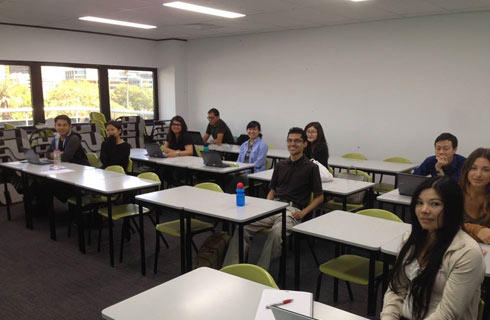国际学生入学条件
Hold a baccalaureate degree from an accredited college or university, or have done work equivalent to that required for such a degree.
Show promise of ability to pursue advanced study and research, as judged by the student’s scholastic record.
Have adequate preparation to enter graduate study in the chosen field. Have at least a 2.75 (2.00=C) undergraduate grade point average.
For review and decision purposes you are required to upload an unofficial copy of your transcript(s) in the application. We require one copy of the scanned transcript from each undergraduate and graduate institution that you attended. Include any transcripts, mark sheets, or grade reports, and any certificates, degrees, diplomas, or statements of graduation or completion from each college or university attended, regardless of the length of attendance, whether or not courses were completed, and whether or not you believe the record will affect your admission or transfer of credit.
Internet Based TOEFL- 75
IELTS - 6.0
Duolingo - 120
Hold a baccalaureate degree from an accredited college or university, or have done work equivalent to that required for such a degree.
Show promise of ability to pursue advanced study and research, as judged by the student’s scholastic record.
Have adequate preparation to enter graduate study in the chosen field. Have at least a 2.75 (2.00=C) undergraduate grade point average.
Applicants to programs in the College of Engineering and Applied Science must have a 3.00 (3.00=B) undergraduate grade point average. Note: applicants who cannot meet this undergraduate standard may still secure regular admission if they have completed 9 semester hours of relevant graduate course work with at least a 3.25 grade point average.
展开
IDP—雅思考试联合主办方

雅思考试总分
6.0
了解更多
雅思考试指南
- 雅思总分:6
- 托福网考总分:75
- 托福笔试总分:537
- 其他语言考试:Duolingo - 120
CRICOS代码:
申请截止日期: 请与IDP顾问联系以获取详细信息。
课程简介
Geomorphology is the study of the evolution of the Earth's surface. We address a wide array of landscapes with an equally broad set of tools and methods. We study the weathering of rock to produce sediment, the transport of sediment on hillslopes and in rivers, and the erosion of bedrock by rivers. We address glacial and periglacial processes in polar and alpine environments the cryosphere -- as their evolution most clearly reflects the variations in climatic forcing, and as these landscapes serve as the mountainous backdrop to our campus. In the field we document real-time geomorphic processes, from GPS monuments on glaciers to meteorological instrumentation to pressure plates beneath debris flow chutes. We also employ an increasingly diverse set of remote sensing tools to image the landscape and to produce time series of changes that highlight both climate and tectonic processes. Finally, we have deep experience in developing numerical models of landscape evolution at the scale of individual landscape elements to the whole landscape, and take advantage of the national office of the CSDMS here at CU/INSTAAR.
展开







 预科
预科 奖学金
奖学金 实习机会
实习机会 在校学习
在校学习 跨境学习
跨境学习 校园授课-线上开始
校园授课-线上开始 在线/远程学习
在线/远程学习














 劳伦森大学
劳伦森大学

 劳伦森大学
劳伦森大学

 阿卡迪亚大学
阿卡迪亚大学

 阿卡迪亚大学
阿卡迪亚大学

 阿卡迪亚大学
阿卡迪亚大学

 北阿尔伯塔理工学院
北阿尔伯塔理工学院




















 美国
美国




